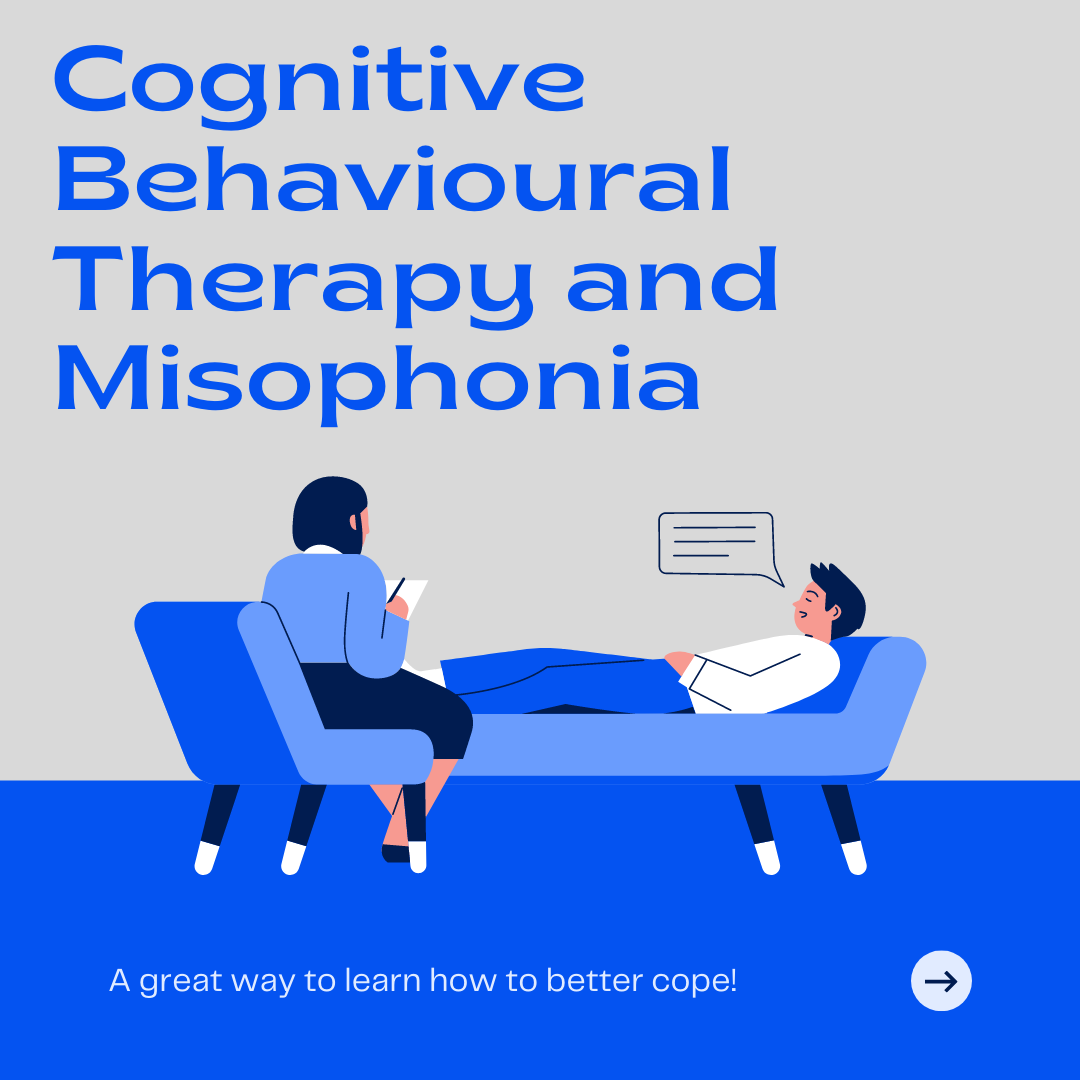This blog post about CBT and Misophonia is written by Rose Kazma, an American therapist who holds a Master’s degree in clinical psychology. She graduated and was licensed in 1990 in Michigan where she worked with diverse populations in private practice and taught psychology for eleven years before relocating to Rome. She has worked with the English speaking expat community in Italy and internationally since 2001.
Causes of Misophonia
The exact etiology of Misophonia is unknow but there is an ever growing body of information which has helped clinicians to identify the shared symptoms and related experiences of individuals who suffer from it. As a result, treatment interventions are being successfully implemented that are providing individuals with varying degrees of symptom relief.
Cognitive Behavioral Therapy, CBT and Misophonia
Cognitive Behavioral Therapy, or CBT, is a psychotherapeutic approach used to treat a vast number of psychological disorders, is one of the treatments that has been used successfully to treat those who suffer from Misophonia. A fundamental premise of CBT is that our thoughts significantly impact how we feel. That is, what we tell ourselves about “ourselves” and our experiences, influences our emotional state and sense of well-being. Most of us recognize that when we are feeling sad, anxious, or angry, our thoughts are pessimistic and in those moments we tend to be critical of ourselves and others.
Of course, negative emotions are inevitable and are a natural and reasonable response to any number of life experiences. If a loved one is ill, you feel worried. If you argue with your partner, you may feel angry or hurt. If you didn’t get the job you had your heart set on, you feel disappointed. It is unrealistic to think that it is possible to be happy all of the time.
When however negative emotions such as sadness, anger, or anxiety become pervasive and dominate our daily life, our mood is impacted, our behavior is influenced and our ability to cope with everyday life is increasingly impaired. These negative emotions are driven by distorted thoughts which are often so automatic that they go unnoticed as such and ultimately unchallenged.
When you don’t get the job you really hoped for, you are disappointed. But now you find it increasingly difficult to motivate yourself to apply for other available positions. Finally, a month has passed since you last sent a CV. Feelings of sadness, worthlessness and hopelessness are pronounced. You are telling yourself, “What’s the point? No one will hire me. I’ll never get a job.” This is an example of a distortion called, Overgeneralization. You see a single negative event as a never ending pattern of defeat.
Cognitions not only influence how we feel but what we do, and those resulting behaviors can contribute to even more psychological pain, often reinforcing our distorted thoughts. In this feedback loop then, our emotional pain is often exacerbated by distorted cognitions and the behaviors arising from them, and are maladaptive coping strategies.
Although there is a dearth of psychological research, we have learned much about Misophonia. Common to all sufferers is an intense physical and affective response to offending sounds. Heightened physiological responses include muscle tension, increased blood pressure, heart rate and sweating. Affective reactions include a range of negative emotions such as anger, irritation, or disgust.
We often see sensitivity to triggers increase when the individual is tired or when he/she cannot identify the source of the offending sound.
Individuals tend more often to be triggered by people with whom they have close, intimate relationships like family members, spouses and close friends. It is also reported that an individual’s response to a trigger can vary or be absent altogether depending on cognitive attribution. For example, it may be less disturbing if the offender is perceived as making a conscious attempt to minimize their noises, aware of the other’s sensitivity.
The intense psychological discomfort reported by sufferers is commonly exacerbated by avoidance behavior. The anticipation of potential triggers causes people to avoid contact with others, often negatively impacting social and occupational functioning and general well being.
Conclusions about CBT and Misophonia
CBT treatment addresses cognitive, behavioral and physical components of Misophonia. Challenging distorted thoughts helps reduce the intensity of negative emotional responses to an offending sound. Developing new coping strategies to reduce anticipatory anxiety helps to increase tolerance and reduce negative avoidant behaviors. Introducing daily meditation and exercise lowers overall stress. Although there is more work needed, CBT case studies and research reveal significant and enduring gains made by individuals struggling with Misophonia.
If you would like to get in touch with Rose, you can email her at besneegio@gmail.com.


Liz Sabillon
I would love a page where you list different treatments and people can rate the effectiveness in their own life. A person can try so many different things with no change that it gets really discouraging. I’d love to see other people’s feedback before I jump to the next possibility.
Andrea Davis
Interesting idea! It would be just like our MisoTech page where misophones review different products, but geared towards treatments! We’ll look into it and think about how to incorporate it here! Thanks for the suggestion!